Or search by topic
Number and algebra
Geometry and measure
Probability and statistics
Working mathematically
Advanced mathematics
For younger learners
Inside Triangles



- Problem
- Getting Started
- Student Solutions
- Teachers' Resources
Shree from the International School Frankfurt in Germany sent in these solutions in which triangles in different places were explored:
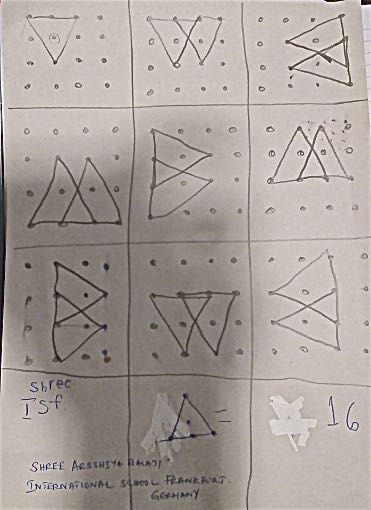
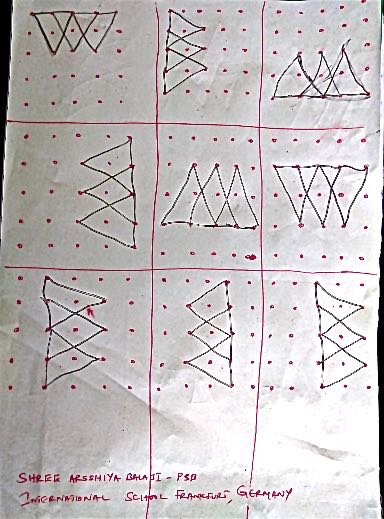
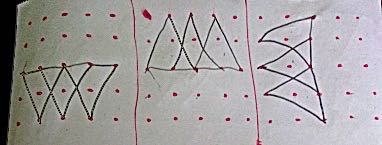
Neptune Class from Riverley Primary wrote to say:
We think that there are 6 triangles in total.
We made sure that each triangle was a different type (scalene, isosceles, right-angled and equilateral) and we experimented with different shapes on the pin-board.
We thought that there must also be a mathematical way to systematically calculate the solution to the problem, but we're still working on it.
I think there are a few more than six triangles, but I like the way you thought that working systematically would help.
That's exactly what Greg from Swanland County Primary School did. He said:
First I tried to just make triangles with a dot inside.
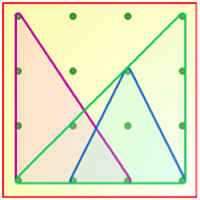
Then I tried ones with a four dot base.
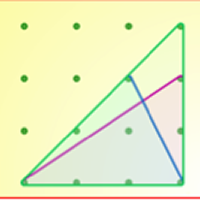
Then I tried one with a two dot base.
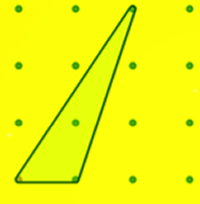
I think there are 7 different triangles.
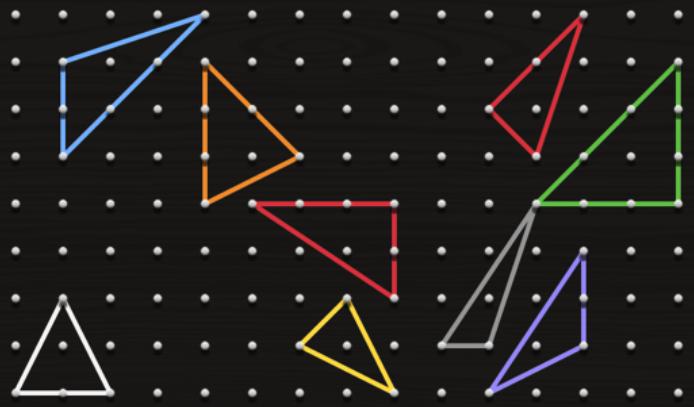
These show some very good approaches. Thank you for sending them into us.
Some of you might like to explore further, being curious about what having two dots within the triangles would be like, for example.
Related Collections
You may also like
Let's Investigate Triangles
Vincent and Tara are making triangles with the class construction set. They have a pile of strips of different lengths. How many different triangles can they make?

